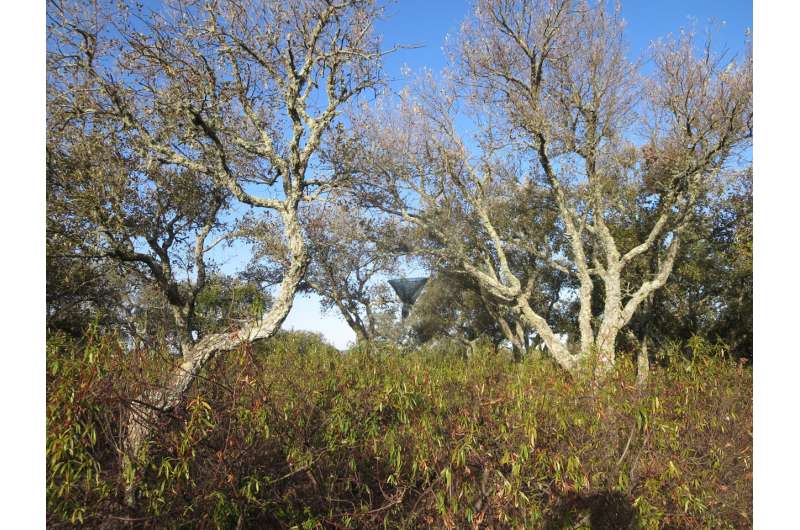Cork oaks among gum rockroses in Portugal. Credit: Simon Haberstroh
What strategies and adaptive measures does the cork oak (Quercus suber) use in savanna-like ecosystems in southeastern Portugal to meet its water needs in summer and winter? And how does it perform when this tree competes for water with the invasive gum rockrose (Cistus ladanifer)? A team led by Dr. Simon Haberstroh and Prof. Dr. Christiane Werner from the Institute of Earth and Environmental Sciences at the University of Freiburg describe their findings on these research questions in the journal Functional Ecology.
Cork oaks change their water use strategy
According to the scientists, neither cork oaks nor gum rockroses control their water flows much in winter or spring. However, this changes during the summer drought, when cork oaks limit their water losses to withstand drought conditions. In contrast, rockrose, an invasive shrub, uses available soil water resources.
"This competitive strategy of the shrubs led to a change in the hydraulic behavior of the cork oaks. Previously, we were not aware that competition for water between plants could lead to such a change in water use strategy," Haberstroh explains. "As a result, the cork oaks took up less carbon, which was expressed by restricted tree water flow, reduced leaf area and stem growth. With continued and recurrent drought stress, this behavior will most likely have long-term negative effects and could contribute to the already observed decline of cork oaks."
The team studied the plants between October 2017 and March 2020 in Portugal. In the field, the researchers documented data on weather, groundwater content, leaf area and sap flow, among other things.
More information: Simon Haberstroh et al, Plant invasion modifies isohydricity in Mediterranean tree species, Functional Ecology (2022). DOI: 10.1111/1365-2435.14126
Journal information: Functional Ecology
Provided by University of Freiburg
























